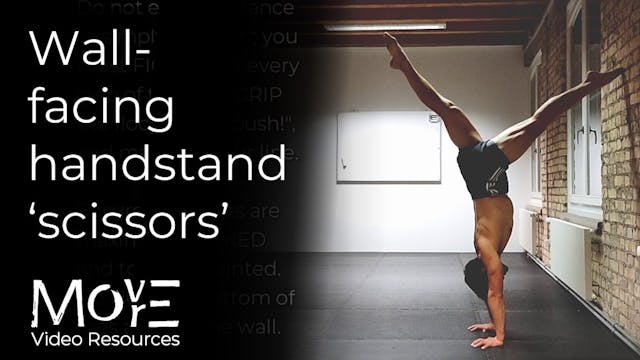Back-to-wall handstand 'Heel-pull'
Handstand supported-balance
•
43s
THE WHAT:
As with the 'Back-to-wall handstand line', the back-to-wall 'Heel-pull' context carries an increased danger of maintaining a suboptimal straight line (namely arching in the back in an undesirable 'banana' form), and yet still managing to fulfil the context of supported-balance.
For this reason, you should be confident that your understanding & sensation of stacked-alignemnt is sufficient enough for your to recognise and correct any breakdowns which may occur in back-to-wall balance development. A simple method (and good habit in the stages of alignment development) is simply to record and review your sets, making necessary adjustments as you progress through your session
LEARN MORE (subscriber-only):
https://drive.google.com/file/d/1qDxXBLRFEpJ-JxyYH_lfuXiFHdZ6NUEa/view?usp=drive_link
___________________
For programming, guidance, & support for your physical practice:
FREE fundamental prehabilitation program: https://www.movemoremp.com
Online Support (1 to 1 coaching): https://movemoremp.com/onlinesupport
Elements (standardised programs): https://www.movemoremp.com/elements-store
[email protected]
Up Next in Handstand supported-balance
-
Wall-facing handstand (sagittal) 'sci...
THE WHAT:
A fundamental drill for developing handstand balance experience in a wall-facing context. Be mindful - as "splitting" the legs is prone to elicit undesirable extension (i.e. leading to the ribs "flaring" up and arching in the lower-back), an even stronger effort to keep the "ribs down!"... -
Back-to-wall (B2W) handstand (sagitta...
THE WHAT:
A fundamental drill for developing handstand balance experience in a back-to-wall context. Be mindful – as B2W contexts & "splitting" the legs are prone to elicit undesirable extension (i.e. leading to the ribs "flaring" up and arching in the lower-back), an even stronger effort to ... -
Back to wall (B2W) head-in tuck-HS
THE WHAT:
Another 'head-in' HS context for developing proprioception as well as awareness of & neural drive in the upper-back/lower-trap muscles during HS. Whilst the former helps build your HS practice laterally, the latter leads to better efficiency (the back-muscles tire less easily than the s...



